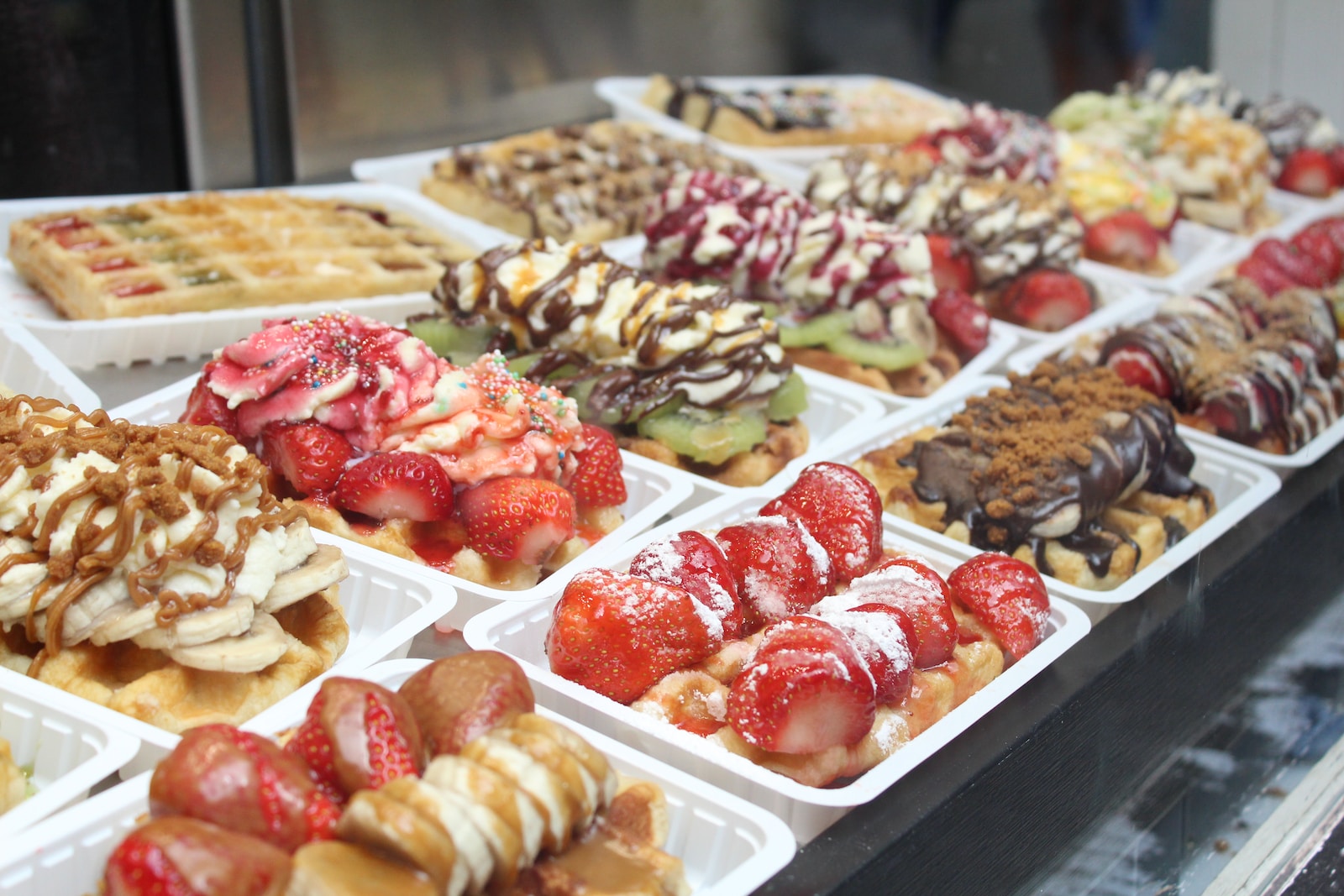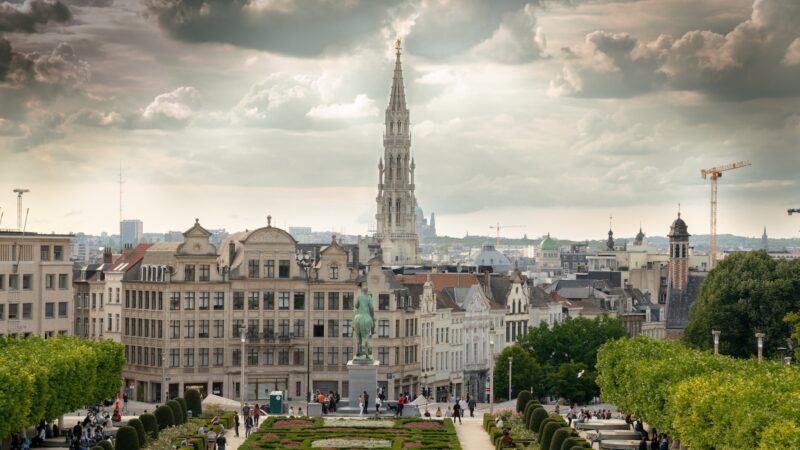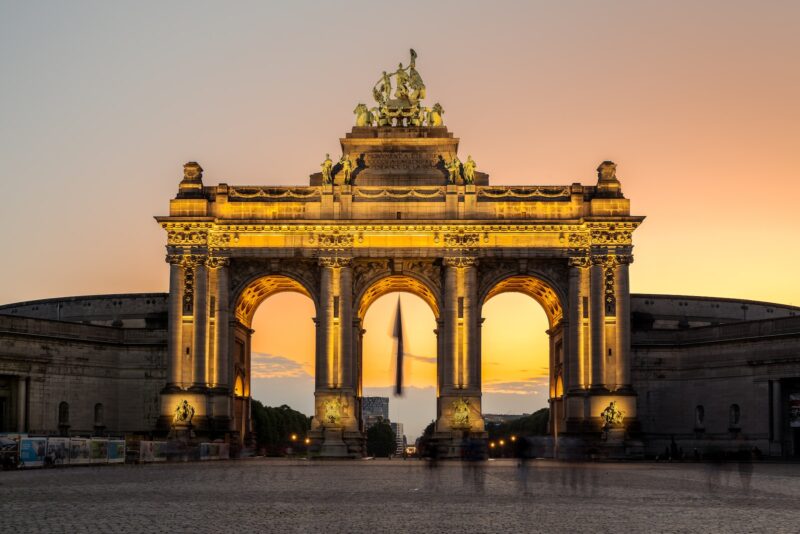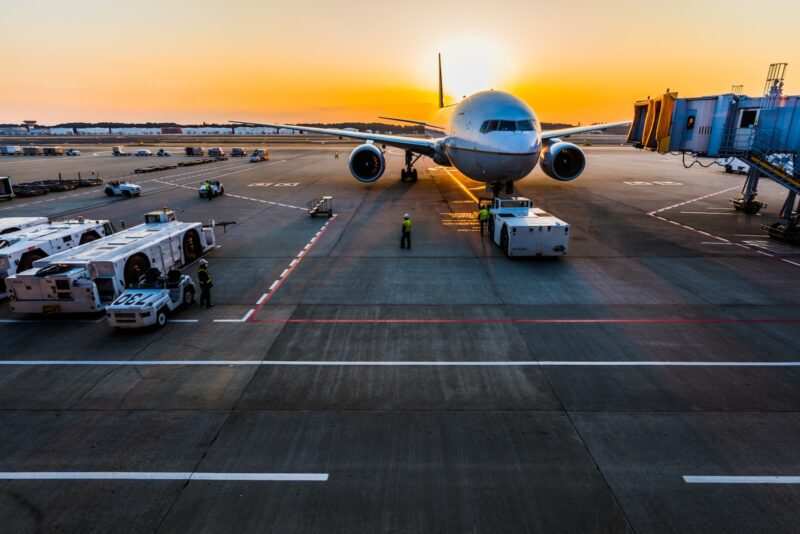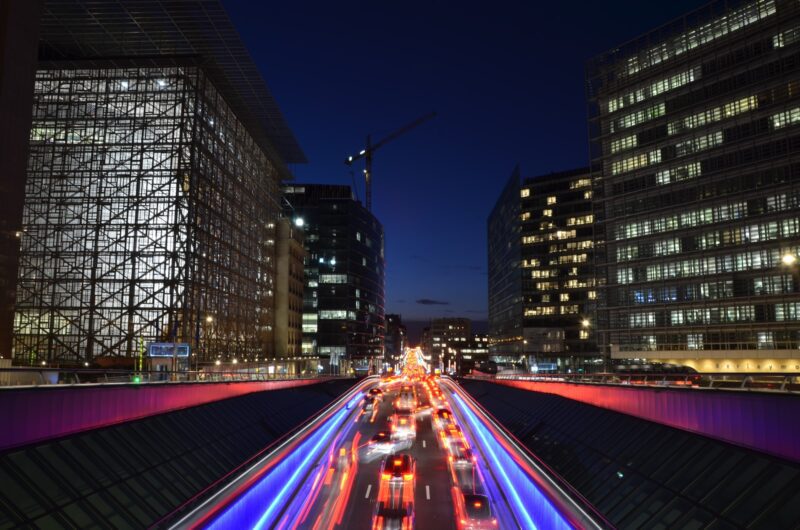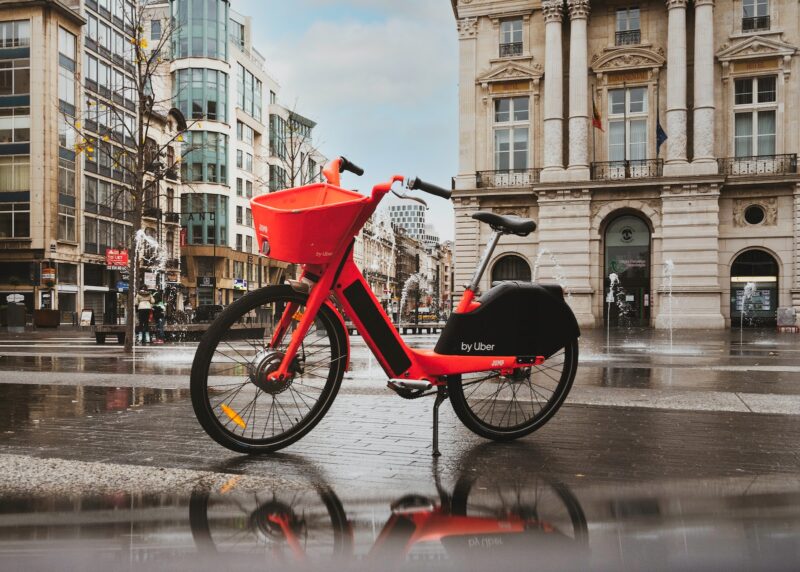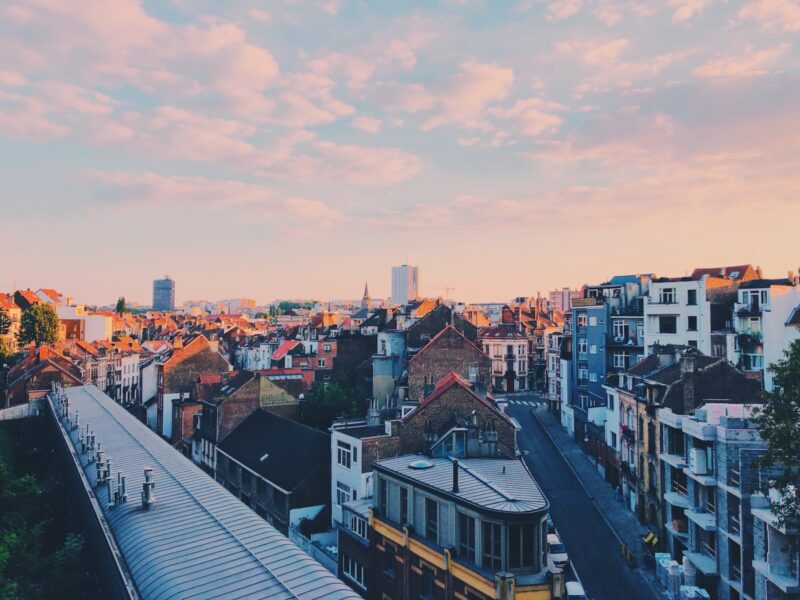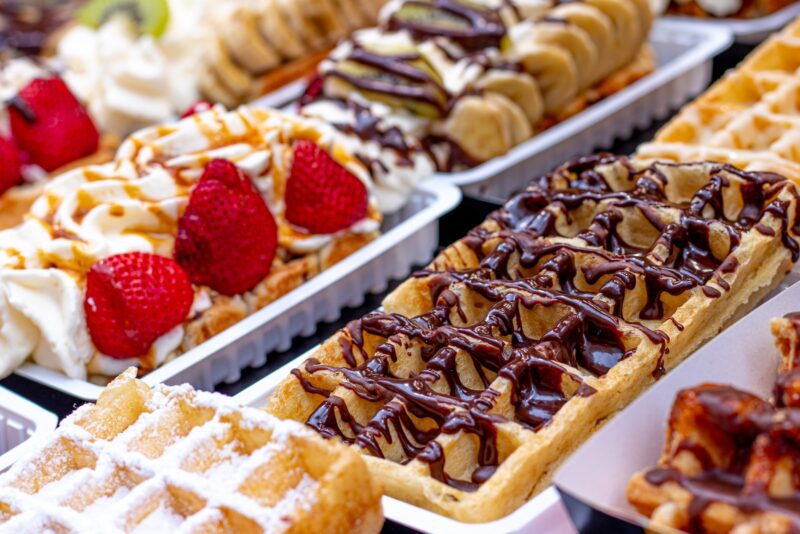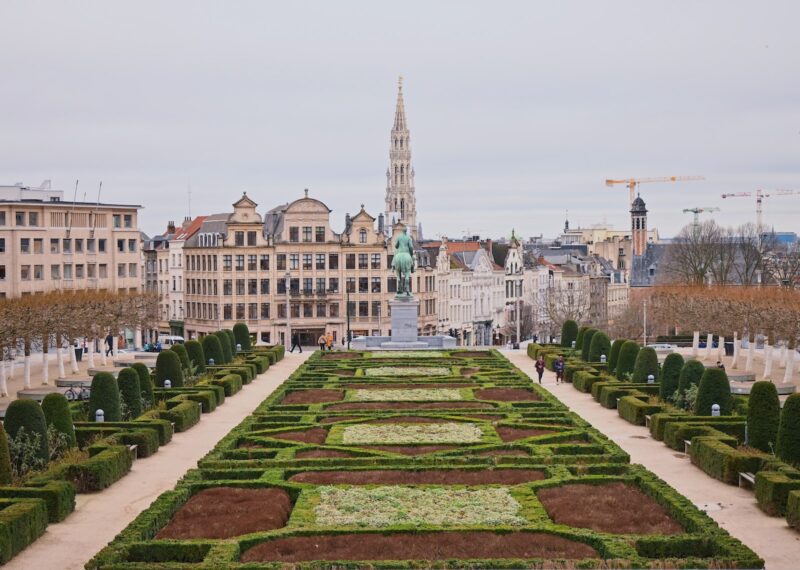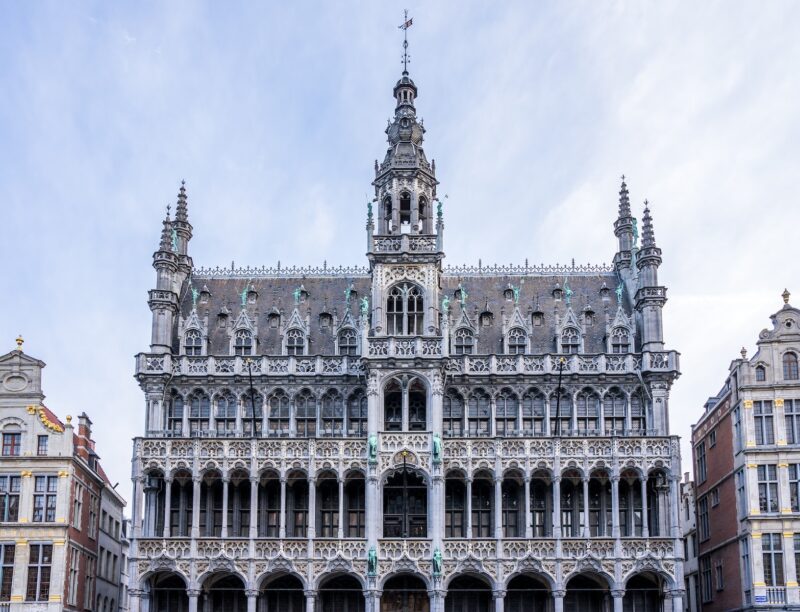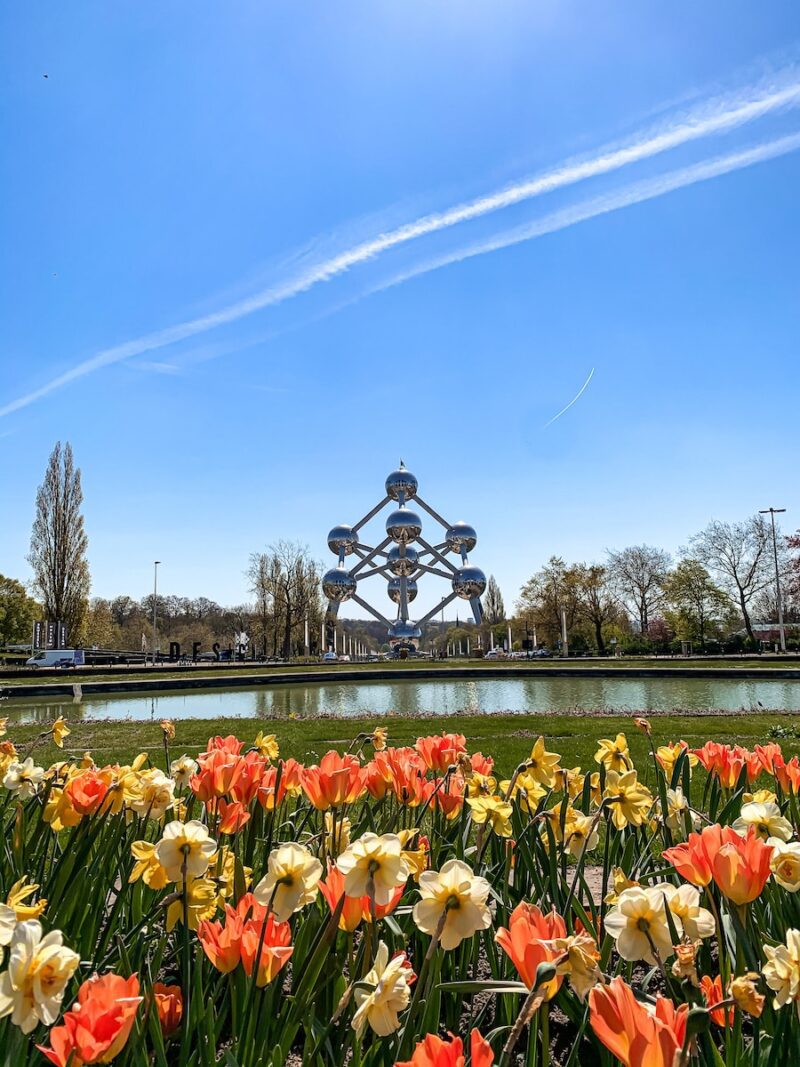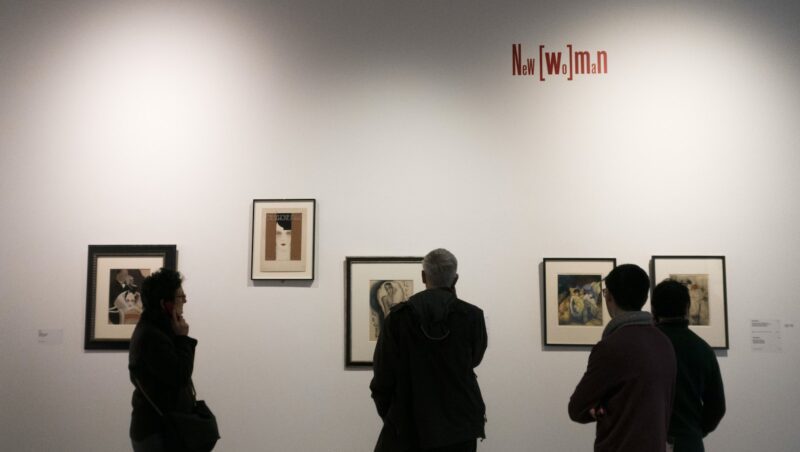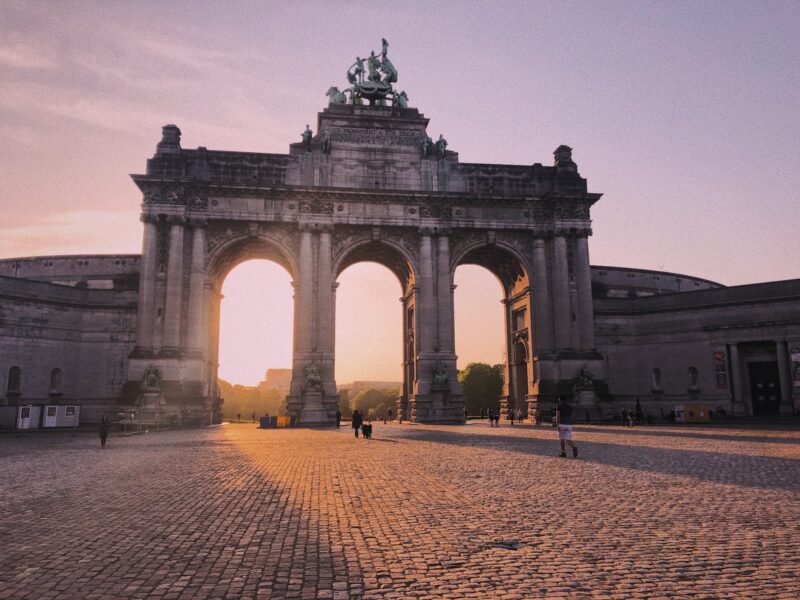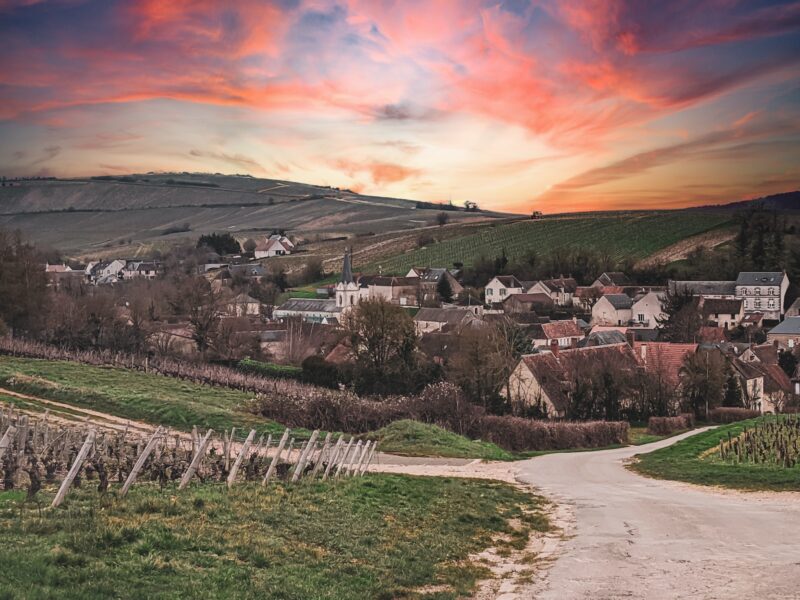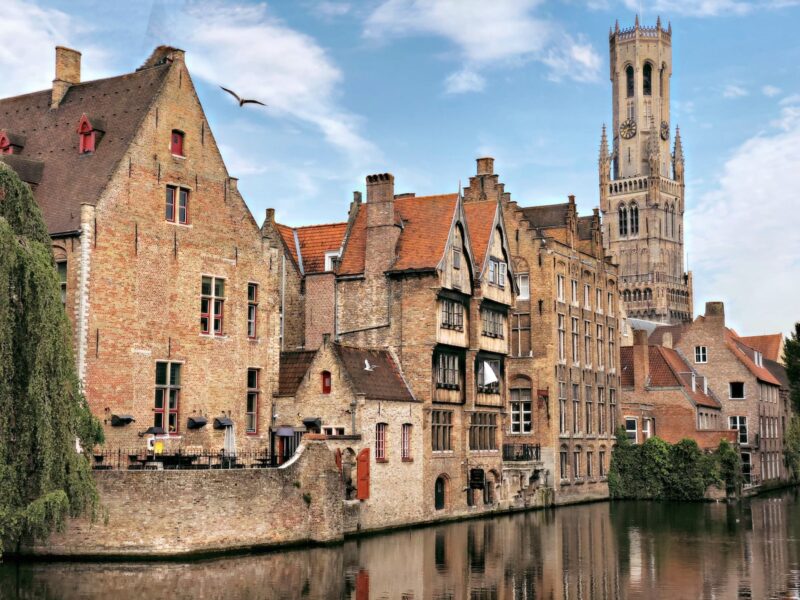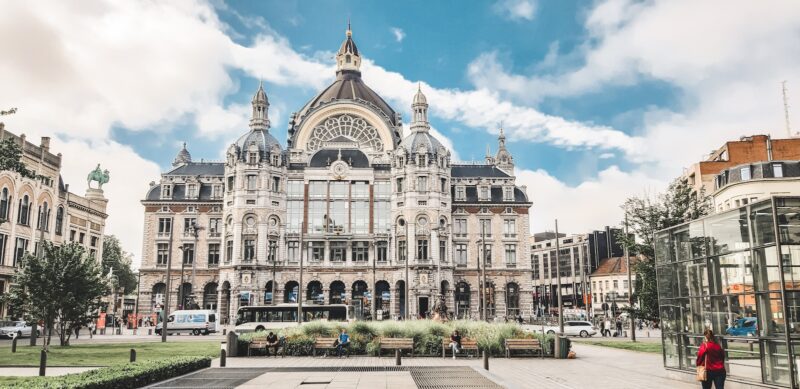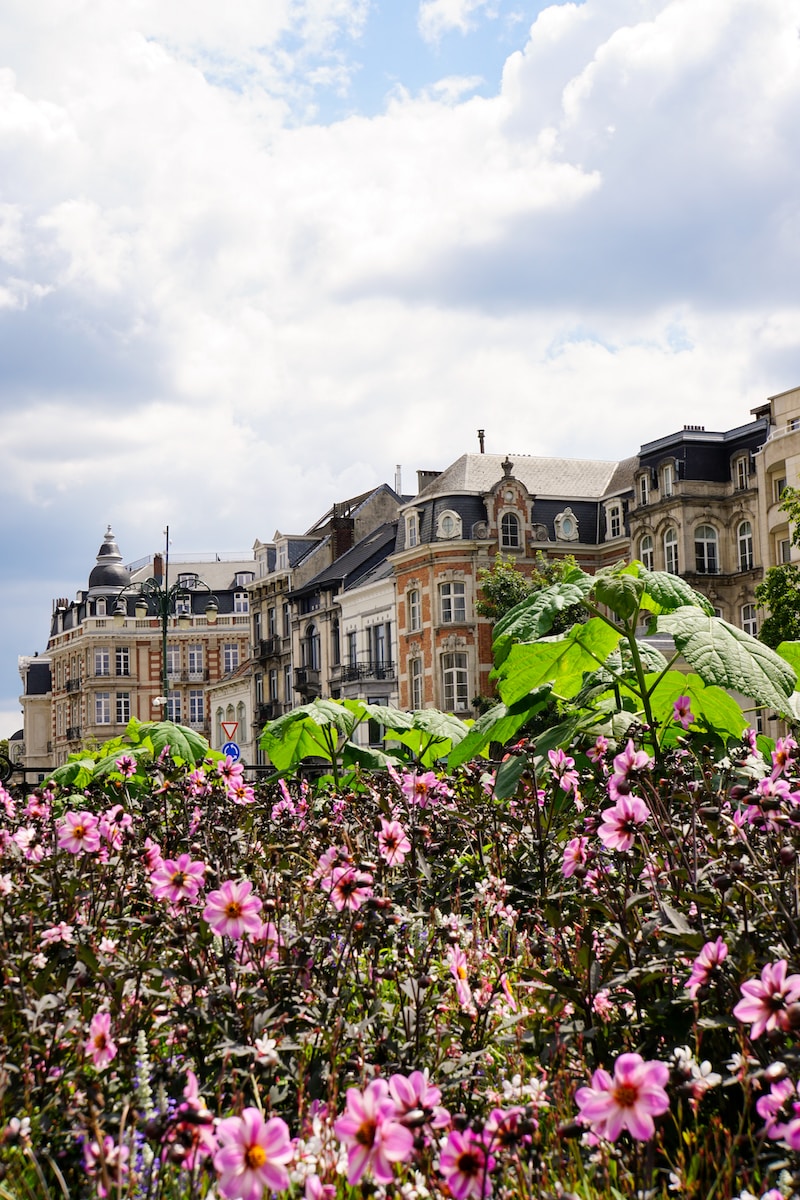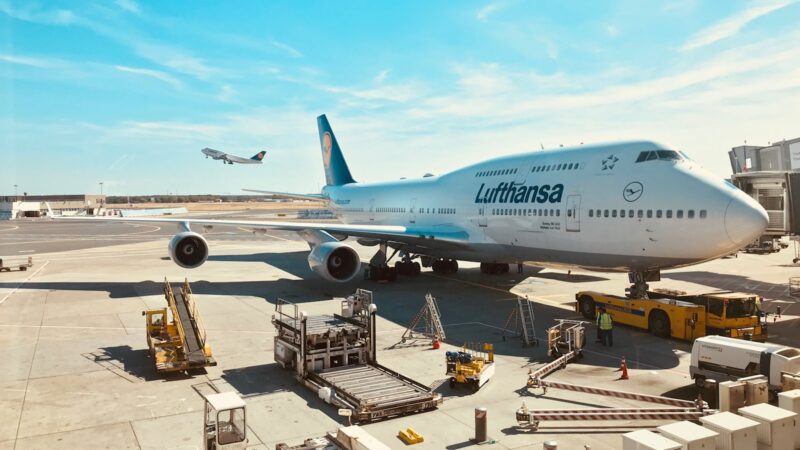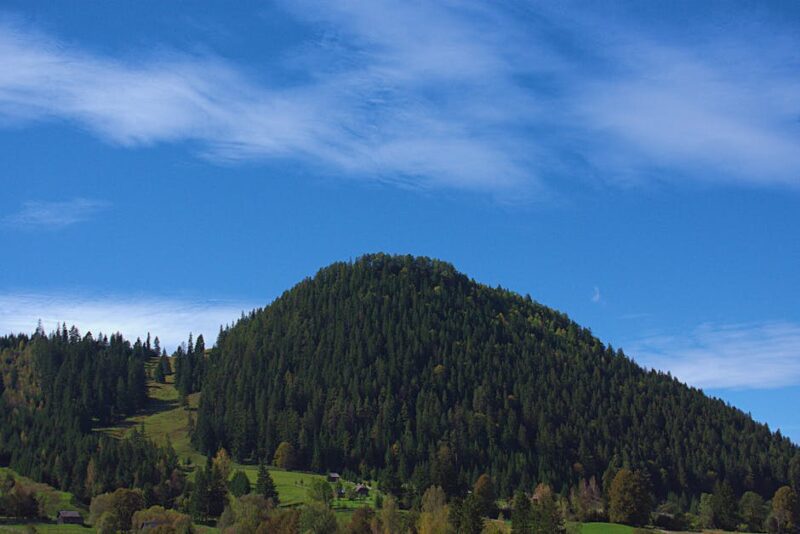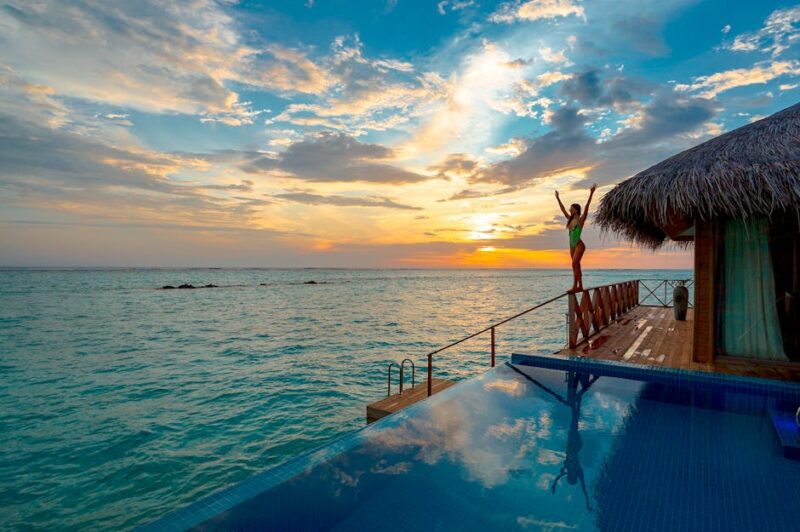Brussels, the capital city of Belgium, offers a unique blend of historic charm and modern cosmopolitan energy. Often overlooked by tourists in favor of more popular European destinations, Brussels is a vibrant city that’s home to the headquarters of the European Union, stunning architecture, and an eclectic cultural scene. As the heart of Europe, it’s a fantastic destination that caters to various interests, with landmarks, remarkable museums, delicious cuisine, and lovely parks.
The city boasts a rich history, evident through its impressive architectural landmarks, including the iconic Atomium and the Grand Place. Brussels’ arts scene is equally impressive, with renowned institutions like the Royal Museums of Fine Arts of Belgium and the celebrated Comic Strip Center. Furthermore, visitors can immerse themselves in the local culture by indulging in Belgian delicacies such as waffles, chocolate, and world-famous beers. Read on to uncover the charms of this unique country.
Table of Contents
ToggleKey Takeaways
- Brussels is a blend of historic charm and modern energies, offering a range of attractions for various interests.
- The city is home to significant historic landmarks, as well as renowned museums and cultural institutions.
- Visitors can savor Belgian cuisine and beers while exploring the city’s shopping districts and recreational activities.
Historic Background
Brussels, the capital of Belgium, has a rich and diverse history that can be traced back to Roman times. The city has always occupied a strategic location, with marshlands on one side and hills and lowlands on the other. Throughout the centuries, Brussels has experienced numerous significant events, including the Belgian Revolution, which led to the country’s independence in 1830. The first king of the Belgians, Leopold I, was crowned in 1831, and Brussels was chosen as the capital of Belgium 1.
The city played an important role as a European power center during the time of the Holy Roman Empire. Charles V, a Holy Roman Emperor, was born in Brussels in 1500 and ruled over a vast territory that included much of Europe and Latin America. His influence can still be seen today, particularly in the beautiful Grand Place, a UNESCO World Heritage Site and the heart of Brussels’ medieval center 2.
Brussels has had its share of challenges, particularly during World War II when German troops occupied the city. Despite these hardships, the city managed to preserve its cultural and historical heritage, including its stunning architecture and landmarks 3.
Today, Brussels is known not only for its historical significance but also for its role as the administrative capital of the European Union, making it a key player in Europe’s political landscape. Visitors can expect to discover a vibrant city with a unique blend of past and present, where the echoes of history intertwine with the pulse of modern European life.
Footnotes
Getting to Brussels
Brussels, the capital of Belgium and the European Union, is well-connected to various European cities, making it an easily accessible destination for travelers. With several transportation options available, visitors can choose between air, train, or bus travel to reach the city.
By air, Brussels is served by two main airports: Brussels Airport (BRU) and Brussels South Charleroi Airport (CRL). The former is the primary international gateway, while Charleroi caters more to low-cost carriers. Both airports offer regular connections to major European cities like Paris and Amsterdam.
For those who prefer rail travel, Brussels boasts excellent train connections within Europe thanks to its central location. The city has three main train stations: Brussels North, Brussels Central, and Brussels Midi. The high-speed Eurostar trains connect Brussels to London in just under two hours, while the Thalys and ICE trains offer convenient travel options to Amsterdam and Paris. Travelers can also take the intercity trains to other Belgian cities or the surrounding countries.
When traveling to Brussels via bus, there are several international bus operators such as FlixBus and Eurolines that provide convenient services from cities like Amsterdam, Paris, and London. Bus travel can be an affordable alternative for those on a budget, while still offering comfortable amenities on board.
In terms of road travel, Brussels is well-connected to the European highway network via major motorways, making it a viable option for those traveling by car or motorcycle.
Overall, with its extensive transportation options, getting to Brussels is a breeze – whether by train, plane, or bus. No matter which mode of transport you choose, you’ll find suitable connections from various European cities to explore the vibrant and multicultural capital of Belgium.
Getting Around the City
Brussels is known for its efficient and extensive public transport system, which makes getting around the city convenient and enjoyable. The main modes of public transport in Brussels include metro, buses, and trams operated by the Brussels Intercommunal Transport Company (STIB).
The city’s metro system consists of four lines, which cover most of the city and its surrounding areas. With frequent and reliable services, the metro is a popular choice for locals and tourists alike. Metro stations are clearly marked, and tickets can be purchased at the station or using ticket machines. A great feature of the metro system is the integration with other modes of transportation, such as trams and buses, allowing seamless transfers between services.
Buses are an essential part of the city’s public transport network, providing extensive coverage to areas not serviced by the metro or trams. Brussels has a diverse and extensive bus system with day and night routes, ensuring the mobility of its inhabitants and visitors. A helpful feature for commuters is the real-time information available at most bus stops, allowing passengers to check the arrival time of their bus.
Additionally, trams play an important role in the city’s transport infrastructure. The tram network operates both on the street level and underground, providing another option for getting around Brussels. Tram stops are easy to locate and usually have information boards displaying the timetables and route maps.
Pro Tip
To make traveling even more effortless, Brussels offers a comprehensive ticketing system that works across all modes of public transport. The different types of tickets available include single-journey tickets, multi-journey tickets, and tourist passes like the Brussels Card. If you plan to use public transport frequently, purchasing a multi-journey ticket or a tourist pass can save you time and money.
In conclusion, Brussels provides a well-connected and user-friendly public transport system that makes exploring the city a breeze. Whether you choose to travel by metro, bus, or tram, the city’s extensive network ensures you can easily reach your destination, making your visit to Brussels a delightful experience.
Accommodation
Brussels offers a wide range of accommodation options for travelers, catering to various budgets and preferences. From luxurious hotels to budget-friendly hostels, the city has something for everyone.
For those seeking upscale accommodation, the Sofitel Brussels Europe offers refined elegance and top-notch amenities in a prime location near the European Parliament. This 5-star hotel features modern rooms, exceptional service, and fine dining options to suit the most discerning tastes.
Mid-range accommodation options are also aplenty in Brussels. Consider staying at a boutique hotel, like the Hotel le Dixseptieme, which combines classic architecture with modern comforts. These establishments often offer personalized experiences and are located close to major attractions or in charming neighborhoods.
Budget travelers can find numerous hostels and guesthouses throughout the city. These affordable options often provide social environments and shared facilities that cater to backpackers and those looking to save money. Popular choices include the Génération Europe Youth Hostel for its clean and comfortable dorms, friendly staff, and convenient location.
When looking for an area to stay in Brussels, consider the following neighborhoods:
- Grand-Place: The historic heart of Brussels, known for its stunning architecture, lively atmosphere, and proximity to major attractions. Ideal for first-time visitors and those looking to immerse themselves in the city’s energy and history.
- Sablon: A charming and upscale neighborhood, featuring antique shops, art galleries, and stylish cafés. A perfect choice for those seeking a more relaxed atmosphere yet still close to major sights.
- European Quarter: Home to the European Parliament and other EU institutions, this district is ideal for business travelers and those interested in European politics. It offers modern, sleek accommodation options and excellent transport connections.
It is always helpful to research and book your accommodation in advance, as prices and availability can vary depending on the time of year and high-demand periods. Regardless of your choice of lodging, rest assured that you’ll find a comfortable, welcoming place to stay while exploring the alluring city of Brussels.
Cuisine and Belgian Beer
When it comes to food and drinks in Brussels, there is no doubt that Belgian beer and delicious cuisine take the center stage. The city is renowned for its rich and diverse culinary scene, offering a mixture of traditional Belgian dishes and a vast selection of beers catering to every taste.
One of the most iconic spots to enjoy a traditional Belgian meal is Maison Antoine, a renowned friterie that has been serving mouthwatering frites since 1948. A visit to Brussels would be incomplete without trying these crispy fries, usually served with an array of delectable sauces and toppings.
Another culinary hotspot in Brussels is Rue des Bouchers, a historic cobblestone street lined with various restaurants and bistros, offering an array of national and international dishes. Here, visitors can indulge in traditional Belgian dishes like moules-frites (mussels and fries) and waffles, as well as experience a lively, bustling atmosphere.
Of course, a trip to Brussels would not be complete without exploring the world of Belgian beer. The city is home to several breweries, bars, and cafes where beer enthusiasts can sample an extensive variety of brews. One notable establishment is the Délirium Café, which holds the record for offering the largest selection of beers in the world. With over 2,000 choices on the menu, even the most discerning beer connoisseur will be impressed.
Aside from beer, Brussels boasts a vast array of eateries that cater to diverse palates. Visitors can find everything from upscale dining experiences to cozy cafes and street food stalls. As you explore the city, keep an eye out for its unique culinary gems to make your Brussels experience truly memorable.
The Heart of Europe
Brussels, the capital of Belgium, is often referred to as the heart of Europe due to its geographical location and its significance as the headquarters of the European Union. This vibrant city is known for its rich history, stunning architecture, and a multicultural atmosphere, making it an ideal travel destination for tourists from around the globe.
One of the city’s central attractions is the Grand Place, a UNESCO World Heritage Site featuring exquisite Gothic and Baroque-style buildings. Surrounded by the Town Hall, the King’s House, and historic guildhalls, this square serves as a timeless symbol of Brussels’ architectural and cultural heritage.
While exploring this multicultural metropolis, visitors can venture into the EU Quarter, where the main institutions of the European Union are located, like the European Commission and the European Parliament. These iconic buildings reflect the unity and diversity of the EU member states and promote a spirit of international cooperation.
Brussels is also known for its renowned museums and art galleries, which boast a vast collection of artwork from both local and international artists. The Belgian capital is particularly famous for its comic art scene, with institutions like the Belgian Centre for Comic Strip Art celebrating the country’s beloved characters such as Tintin and the Smurfs.
A trip to Brussels would not be complete without indulging in the city’s mouthwatering culinary delights, including its heavenly Belgian chocolate, waffles, and world-famous beers. Wander through the charming streets of the Sablon and visit the numerous artisanal chocolate shops and breweries to experience authentic Belgian flavors.
In conclusion, Brussels embodies the essence of the heart of Europe with its rich history, beautiful architecture, and multicultural atmosphere. Its significance as a center of international cooperation and culture make this vibrant city a must-visit for any traveler seeking a true European experience.
Noteworthy Landmarks
Brussels, the vibrant capital of Belgium, offers an array of impressive landmarks for visitors to explore. One of the most iconic sites in the city is the Grand Place, a UNESCO World Heritage site. This stunning, historic square is surrounded by remarkable Gothic-style buildings, including the Town Hall and the Museum of Fine Arts. It is a must-see for anyone visiting Brussels.
Another famous landmark is the Manneken Pis, a small bronze statue of a little boy peeing into a fountain. Standing just 61 cm tall, this quirky work of art is located in the heart of Brussels and attracts many tourists for its peculiar charm and various legends surrounding its creation.
The Atomium stands proudly as one of Brussels’ most modern and distinctive landmarks. Constructed in 1958 for the World’s Fair, the Atomium represents an iron crystal magnified 165 billion times. The iconic structure houses exhibition spaces and offers a panoramic view of the city from its top sphere.
Brussels’ Town Hall is another significant landmark, dating back to the 15th century. With its ornate facade and towering, intricate spire, the Town Hall adds a touch of grandeur to the Grand Place. It is an excellent example of the Gothic architectural style and remains an important symbol of the city.
Last but not least, don’t miss the opportunity to visit the Museum of Fine Arts in Brussels. This world-renowned institution is home to an extensive collection of exceptional artwork, ranging from the early Flemish masters to modern creations. It is the perfect destination for art enthusiasts and history lovers alike.
These noteworthy landmarks reflect the diverse character of Brussels, providing a glimpse into its rich history, vibrant culture, and captivating allure.
Arts and Museums
Brussels is a city with a rich cultural history, and its art scene reflects this heritage. One of the most significant art movements to emerge from the city is Art Nouveau, which gained prominence in the late 19th and early 20th centuries. The famous architect Victor Horta was a leading figure in this movement, designing many iconic buildings throughout the city.
For art enthusiasts, the Royal Museums of Fine Arts (Musées Royaux Des Beaux-Arts) is a must-visit destination. This cultural gem is the most visited group of museums in Brussels, housing a vast collection of art from various periods and genres. It includes several locations, such as the Old Masters Museum, the Modern Museum, and the Magritte Museum.
The Magritte Museum is dedicated to the renowned Belgian surrealist painter René Magritte. It showcases an extensive collection of his works, allowing visitors to explore the world of surrealism and gain a deeper understanding of Magritte’s unique artistic vision.
In addition to these well-known establishments, Brussels offers a wide range of smaller museums and galleries to explore. For example, the Belgian Comic Strip Center celebrates the country’s rich comic book history, while the Musical Instruments Museum displays a unique collection of instruments from around the world.
Overall, Brussels offers an exciting and diverse art scene for visitors to discover, with museums and galleries that showcase the artistic voices from various periods and movements. The city’s passion for the arts ensures that there is always something new and inspiring to experience during your visit.
Shopping and Fashion
Brussels is a paradise for fashion lovers with a plethora of boutiques and designers to explore. One of the prime locations for shopping in the city is the hip Dansaert district, known for its trendy clothing stores and unique fashion finds. For an upscale shopping experience, head to the high-end Waterloo and Louise boulevards where you’ll find luxurious local and international brands.
Brussels is home to numerous innovative designers and exclusive boutiques. One such example is KURE, which offers an array of fashionable items in its sanctuary-like store. For a more local experience, consider visiting Caroline Biss on Avenue Louise. This boutique offers down-to-earth daywear in muted tones, perfect for a casual yet sophisticated look.
While wandering through the city streets, be sure to pop into the many vintage stores such as Les Enfants d’Edouard on Avenue Louise. Here, you can find unique vintage clothing items and accessories to add a touch of nostalgia to your wardrobe. For a more eclectic mix, venture over to the Jeu de Balle market, where you can not only find clothing but also a variety of antiques, books, and other treasures.
Another fascinating aspect of Brussels’ fashion scene is its comic book culture, with numerous stores catering to fans of all ages. Whether you’re a lifelong comic enthusiast or just discovering the art form, these shops offer a range of merchandise to pique your interest.
Recreational Activities
Brussels, the vibrant capital of Belgium, offers a wide range of recreational activities to suit every traveler’s taste. The city is known for its rich culture, delicious food, and iconic landmarks, making it an ideal destination for a memorable trip.
For those who enjoy nightlife, Brussels boasts an extensive array of bars, clubs, and live music venues. One of the most famous spots for nightlife in the city is Delirium Café. This iconic bar holds a Guinness World Record for offering the most extensive selection of beers – over 2,000 different varieties. Alongside its impressive beer menu, Delirium Café hosts live music events and themed nights, making it a must-visit location for beer enthusiasts and fun-seekers alike.
Outdoor Activities
In addition to its bustling nightlife, Brussels is home to a diverse range of outdoor activities. From leisurely strolls through picturesque parks like Parc du Cinquantenaire to adventurous bike rides around the Atomium, there is always something to do for nature lovers and fitness enthusiasts. Those interested in exploring the city’s rich history can join guided walking tours, which cover essential landmarks such as the Grand Place, Manneken Pis, and the Royal Palace.
Furthermore, Brussels has a strong connection to the art world, particularly with comic strips and street art. The Belgian Comic Strip Museum is a popular attraction where visitors can immerse themselves in the colorful world of comics, interact with beloved characters like Tintin, and learn about the history and evolution of the art form.
Travelers with a sweet tooth will be delighted to know that Brussels is renowned for its delicious chocolates. Many workshops and tours are available for visitors to learn about the chocolate-making process, taste different varieties, and even create their own custom chocolates.
In summary, Brussels offers numerous recreational activities catering to a diverse range of interests. From its lively nightlife at Delirium Café and beautiful outdoor spaces to its rich history and thriving art scene, the city promises an unforgettable experience for all visitors.
Side Trips from Brussels
Brussels, the capital city of Belgium, offers a variety of exciting day trips to explore the rich history, culture, and picturesque scenery of the country. Taking advantage of these excursions is highly recommended to get the most out of your visit to Belgium. Here are a few popular side trips from Brussels that you should consider.
Waterloo
Waterloo is an ideal destination for history enthusiasts. The town is famous for the Battle of Waterloo, which marked the end of Napoleon’s reign in 1815. Located just 18 km (11 miles) from Brussels, it is easily accessible by car or bus. When you arrive, don’t forget to visit the Wellington Museum and the Battlefield Visitor Center to learn more about this historical event in depth. Plan enough time to take in the engaging exhibits and views of the battlefield. For more information about how to get there, click here.
Bruges
Bruges is another popular destination and can be reached within 1 hour and 20 minutes by car or 1 hour and 10 minutes by train from Brussels. Known for its medieval architecture, picturesque canals, and cobblestone streets, this charming city gives you the perfect opportunity to step back in time and experience the rich history of the region. Be sure to explore the city center and walk along the canals to fully appreciate the beauty of Bruges. Find more information about visiting Bruges here.
Antwerp
Antwerp is an excellent choice for a day trip, offering a unique blend of modern and historical attractions. This bustling port city is known for its rich art scene, diamond trade, and beautiful architecture. Spend time admiring the stunning Cathedral of Our Lady, visit the renowned Plantin-Moretus Museum, or wander through the trendy shopping streets. Antwerp is easily accessible by train from Brussels, making it a convenient option for a quick getaway. For more information about Antwerp, refer to this TripAdvisor thread.
Ghent
Lastly, Ghent is another must-see destination easily reachable by train from Brussels. Filled with impressive architecture, such as the medieval Gravensteen Castle and Saint Bavo’s Cathedral, this vibrant city offers countless opportunities to explore its rich cultural heritage. Be sure to take a leisurely stroll along the picturesque canals and enjoy the many shops, cafes, and art galleries that Ghent has to offer.
These side trips from Brussels will undoubtedly enhance your experience of Belgium’s diverse history, culture, and beauty. To make the most of your visit, consider adding one or more of these destinations to your itinerary and explore everything that Belgium has to offer.
Frequently Asked Questions
How can I create an ideal itinerary for Brussels?
To create an ideal itinerary for Brussels, start by researching the city’s history and top attractions. Make a list of your preferred sites to visit, like museums and famous landmarks, and allocate time for leisurely activities such as browsing local markets and sampling Belgian cuisine. Book your hotel in advance and consider including a mix of popular tourist spots and lesser-known local gems.
What are the current travel restrictions for Brussels?
As of Tue Sep 19 2023, there is no requirement for people traveling to Belgium to have one of the three COVID-19 certificates (vaccination, test, or recovery), unless it is required for travelers coming from a country with a new variant of concern. For the most up-to-date information on travel restrictions, visit the official Brussels website.
What are some local tips for visiting Brussels?
When visiting Brussels, keep in mind that locals refer to the city and region interchangeably, so double-check your information when talking about Brussels. Also, be aware that there are two airports bearing the Brussels name: Brussels Airport and Brussels South Charleroi. Brussels Airport is the older and larger one. During your trip, be sure to taste local specialties like moules-frites (mussels with fries) and indulge in the city’s famous chocolate and waffles.
What is the weather like year-round?
Brussels has a temperate maritime climate, which means it experiences mild winters and cool summers. The city sees frequent rainfall throughout the year, with the wettest months being June, July, and August. Spring and autumn offer relatively mild temperatures and fewer tourists, making these the best times for a visit.
What is the main language?
Dutch, French, and German are the three official languages of Belgium. In Brussels, the majority of the population speaks French. However, a significant portion of residents also speak Dutch. English is widely understood and spoken, making it easy for tourists to communicate with locals.
What is the etiquette like?
When visiting Brussels, it’s essential to be respectful of local customs and etiquette. Always greet people with a polite “hello” in the local language (“bonjour” in French, “goedendag” in Dutch). Handshakes are the standard form of greeting. When dining out, tipping is appreciated but not mandatory; rounding up to the nearest euro or adding a 10% gratuity is a common practice. Be aware of personal space and avoid speaking too loudly in public spaces, especially on public transport.



